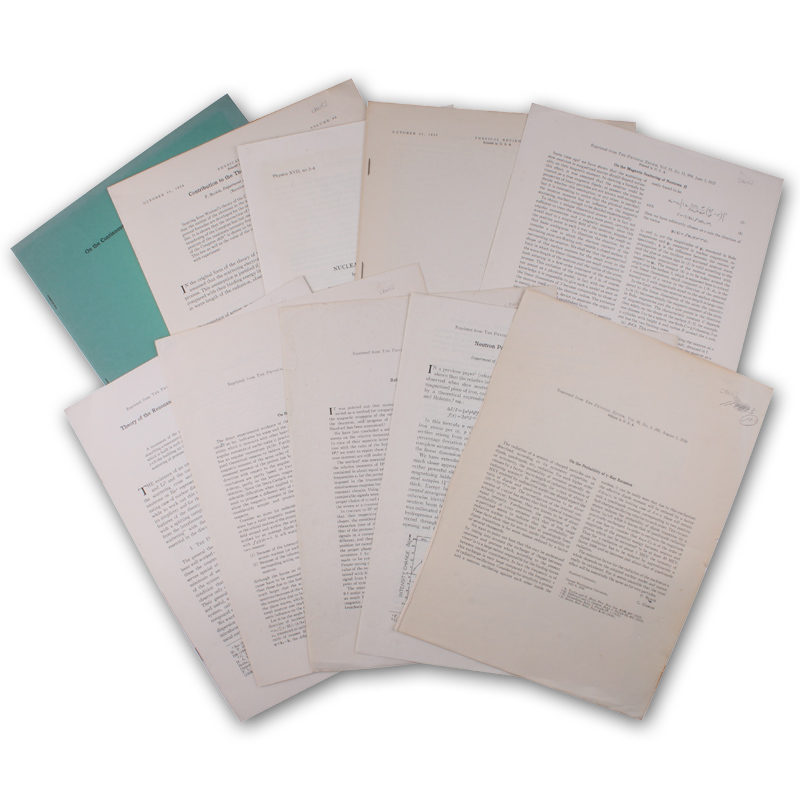114093-01
Konvolut mit 10 Sonderdrucken.
1934-51. - (25 x 16,5 bis 27 x 20 cm). Mit Abbildungen. Original-Broschuren.
Vorhanden sind: Nuclear Induction (9 S.); Contribution to the Theory of the Compton-Line (12 S.); Relative Nuclear Moments of H1 and H2 (1 S.); On the Mechanism of Unimolecular Electron Capture (7 S.); On the Magnetic Scattering of Neutrons II (1 S.); Theory of the Resonance Scattering of Protons and Neutrons on Helium (8 S.); On the Magnetic Scattering of Neutrons (2 S.); Neutron Polarization and Ferromagnetic Saturation (2 S.); On the Probability of Gamma-Ray Emission (1 S.) und On the Continuous Gamma-Radiation Accompanying the Beta-Decay (8 S.). - Bloch (1905-1983), Schüler von Heisenberg, arbeitete hauptsächlich auf den Gebieten der Quantenelektrodynamik, der Festkörperphysik und der Supraleitfähigkeit. Für die Entwicklung neuer Methoden in der Kernspinresonanzspektroskopie und den damit erzielten Entdeckungen erhält er 1952 den Nobelpreis für Physik. - Wohlerhalten
Konvolut mit 10 Sonderdrucken.
1934-51. - (25 x 16,5 bis 27 x 20 cm). Mit Abbildungen. Original-Broschuren.
Vorhanden sind: Nuclear Induction (9 S.); Contribution to the Theory of the Compton-Line (12 S.); Relative Nuclear Moments of H1 and H2 (1 S.); On the Mechanism of Unimolecular Electron Capture (7 S.); On the Magnetic Scattering of Neutrons II (1 S.); Theory of the Resonance Scattering of Protons and Neutrons on Helium (8 S.); On the Magnetic Scattering of Neutrons (2 S.); Neutron Polarization and Ferromagnetic Saturation (2 S.); On the Probability of Gamma-Ray Emission (1 S.) und On the Continuous Gamma-Radiation Accompanying the Beta-Decay (8 S.). - Bloch (1905-1983), Schüler von Heisenberg, arbeitete hauptsächlich auf den Gebieten der Quantenelektrodynamik, der Festkörperphysik und der Supraleitfähigkeit. Für die Entwicklung neuer Methoden in der Kernspinresonanzspektroskopie und den damit erzielten Entdeckungen erhält er 1952 den Nobelpreis für Physik. - Wohlerhalten
195 €

